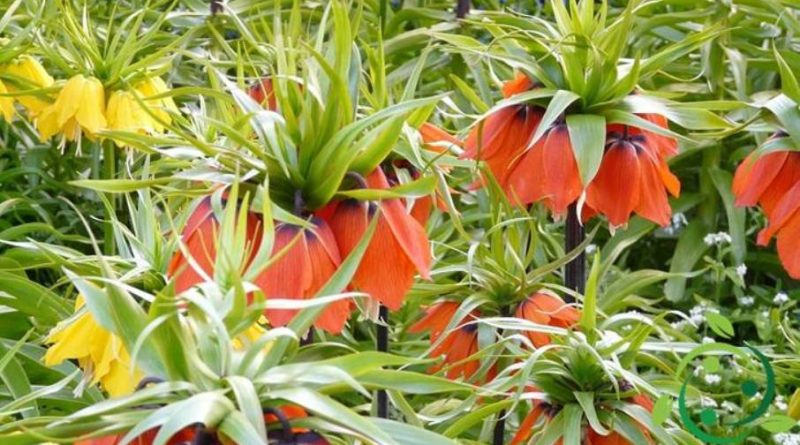How to cultivate the Fritillaria
How to cultivate the Fritillaria
The Fritillaries are a genus of plants (Fritillaria L., 1753) of the Liliaceae family, originating in South Africa; this genus includes bulbous plants distributed in the temperate regions of the northern hemisphere.
In this card we will see how to cultivate the Fritillaria following the most appropriate measures to obtain a good flowering.
However, it is a plant that can be cultivated both in pots and in the garden. Among the Fritillaries we remind: Fritillaria affinis, Fritillaria camschatcensis, Fritillaria imperialis, Fritillaria lusitanica, Fritillaria meleagris, Fritillaria pyrenaica and Fritillaria tenella.
The Fritillaria is recognized as the aerial part of the plant is formed by erect stems, from 25 cm up to 1.20 m depending on the species, with tufts of alternating arched, ribbon-like, pointed leaves, dark green, glossy.
In the apical part of the tuft of leaves, from late spring, campanulate, pendulous flowers bloom, gathered in a showy circular crown, with corollas composed of showy inflorescences of yellow, green, blue, orange, red, in a single color or mottled. After flowering, the fritillaries produce long pods containing numerous fertile seeds. When the winter is over then the aerial part dries up and the bulbs go into dormancy.
For the planting of a Fritillaria, if you work in the garden, you must choose a semi-shaded place, so that the plants receive a few hours of sunshine in the morning; they are not plants that fear the cold.
The choice of the soil in which to cultivate it must fall into rich, loose, non-calcareous soils with good drainage. Excellent are the sandy soils, rich in organic substance and siliceous in nature.
Before burying the bulbs it is good to consider that they need a large space to develop at their best, so it is good to prepare large holes in which to introduce humus of earthworm mixed 50% with silica sand. A similar soil should be prepared for pot cultivation.
The fritillary bulbs are planted at the end of autumn in soft soil and in holes about 10-15 cm deep.
Fertilization of Fritillaria should be done depending on whether it is grown in the garden or in a pot. In the garden, always choose natural, organic fertilizers, such as earthworm humus or mature bovine manure to be administered at the time of planting the bulbs or before the vegetative growth, mixing it together with the first parts of soil.
In pots we recommend the administration of a specific fertilizer for flowering plants, rich in potassium (K), during the vegetative growth period. This fertilizer should be administered every four months; if instead you use a liquid fertilizer for flowering plants, normally it should be put every 15-20 days, properly diluted in the water of the watering.
In terms of irrigation requirements, the Fritillaries need regular and constant irrigation starting from the spring period until the withering of the flowers; the water supply must be done regularly, always waiting for the soil or the soil of the pot to dry between one watering and the other; to suspend watering, you can adjust when the leaves begin to turn yellow.
As far as propagation is concerned, the Fritillaria is propagated by seed and by the division of the bulbs. The sowing period, even directly at home, is that of late winter – early spring depending on the climate where it is grown (it can be anticipated to the south and postponed to the north).
If you multiply through the division of the cloves, which form next to the main bulb, this is done by gently detaching them from the central bulb.
With reference to diseases and pests, Fritillaria is a plant that is very resistant to both insects, mites and fungal diseases. It can be subject to leaf erosion by snails.

